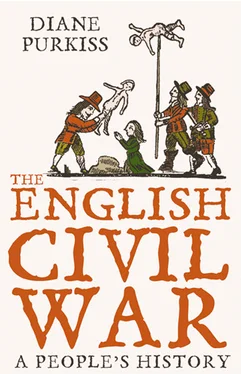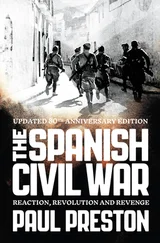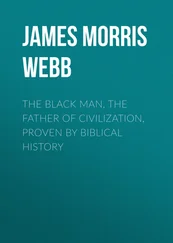It was in this atmosphere of tension and violence that on 7 November 1641 Pym began formally to connect ‘the corrupt part of our clergy that make things for their own ends and with a union between us and Rome’. This is close to what Milton wrote in a sudden outburst of passionately anti-Laudian fervour in Lycidas: the spineless clergy do not feed their hungry sheep, and so Rome, ‘the grim wolf with privy paw’ carries off more of them every day. But Pym meant more. For him, increasingly influenced by the Scots, bishops themselves were coming to seem central to the problem. And Parliament was the centre of the solution: ‘the parliament is as the soul of the commonwealth, that only is able to apprehend and understand the symptoms of all such diseases that threaten the body politic’. He spoke for two hours. He connected the religious menaces of popery with menaces to Parliament, to property. That afternoon, although this was not obvious to him or to anyone else, Pym created the Parliamentarian cause that was to be disputed so bloodily over the next nine years.
The Grand Remonstrance was Pym’s powerful statement of a political credo that demanded reform on a grand scale indeed. The elections to the Common Council a month later, in December, provided a very comfortable majority of Pym’s supporters, and from January 1642, the older and more conservative councillors were systematically replaced by those who served Pym. The Grand Remonstrance was not a Declaration of Independence, or a Declaration of the Rights of Man, much less a Marseillaise. It was still couched in the conservative rhetoric of days of yore, asking the king in fulsome terms of grovelling humility to redress grievances. But even that rhetoric had begun to fall away, and some at least of it was addressed to the people, not the king. It was first read on 8 November 1641, and finally passed in the middle of the night on the 22nd. In it Pym’s exceptionally vehement anti-popery and his concerns about the state came to seem one and the same issue. It contained long low moans about the Jesuited papists: ‘the multiplicity, sharpness and malignity of those evils under which we have now many years suffered … and which were fomented and cherished by … those malignant parties whose proceedings evidently appear to be mainly for their advantage and increase of popery’. They, it seemed, and not Strafford, were responsible for everything that had gone wrong in the past fifteen years. Like Hitler’s anti-Semitism, Pym’s anti-popery was both a genuine moral passion and also a card he played to try to bring the public into sympathy with his plans.
The phrase Grand Remonstrance is still used for any rebuke, though few today have much idea of what was in the original. The Remonstrance was a multipurpose affair. It was a discontented history of the personal rule of Charles I, minute and even fussy. Every grievance of the personal rule found a place. But its main concerns were large. Its announced goal was to restore ‘the ancient honour, greatness and security of this crown and nation’. It was to expose the ‘mischevious designs’ that had tried to drive a wedge between the king and his people, forcing them to argue about liberty and prerogative. It was also supposed to expose those who intended to drive Puritans out ‘with force’ or root them out by violence. It demanded that the king employ only ministers ‘as the Parliament may have cause to confide in, without which we cannot give his Majesty supplies for the support of his own estate’. It demanded that bishops be deprived of votes in the Lords, ‘who cherish formality and superstition’ in what came to seem an ‘ecclesiastical tyranny’. It complained of illicit revenue-raising through Ship Money and the Forced Loan. It objected to the imprisonment of members of the Commons. It protested very strenuously at the destruction of the king’s forests, a matter near Pym’s heart, and to the selling of Forest of Dean timber to ‘papists’, ‘which was the best storehouse of this kingdom for the maintenance of our shipping’. It also tried to reassure everyone that it was not a blueprint for religious radicalism. There would be, if anything, more discipline than before. Similarly, it closed with a ringing avowal, explaining that all its creators wanted was ‘that His Majesty may have cause to be in love with good counsel, and good men’.
The debate was the most passionate the House had ever seen. The final exchange, on 22 November 1641, was especially fierce, and here the shadowy outlines of Royalist and Parliamentarian became briefly visible. Many spoke against the Remonstrance. They disliked its peremptory procedure, the refusal of its creators to consult the Lords. Pym and his chums were becoming starkly visible as a powerful clique, and some members of the Commons were not eager to expel one clique in order to have another in its place. Those who disliked the Remonstrance complained that it dragged old skeletons from their graves. Pym retorted that the country’s plight was desperate. Popery was about to destroy everything. But some were beginning to wonder if there really were evil Jesuits lurking behind every tree. A moderate group containing future historian and Earl of Clarendon Edward Hyde and the brilliant young humanist Lucius Cary, Viscount Falkland, were among the doubters. They worried, too, that Pym and his faction were encouraging sectarians and godly fanatics. One dissenter was Sir Edward Dering, and his concerns show what was truly radical about the Grand Remonstrance, though not everyone noticed at the time. There was something big at stake here: ‘When I first heard of a remonstrance, I presently imagined that like faithful counsellors we should hold up a glass unto his majesty; I thought to represent unto the king the wicked counsels of pernicious councillors; the restless turbulency of practical papists … I did not dream that we should remonstrate downward, tell stories to the people, and talk of the King as a third person.’
For Dering, the Remonstrance was radical and entirely unacceptable not for what it said, but to whom it was said. Parliament was no longer addressing its grievances to the king, but to the people. Sovereignty and the definition of who guaranteed the people’s rights had shifted. Pym responded, though, with the glorious plainness which kept him in his place as leader: ‘It’s time to speak plain English,’ he said, ‘lest posterity shall say that England was lost and no man dared speak truth.’ The debate went on until after midnight, when there was – at long last – a division. Over three hundred MPs were still present. The Remonstrance was carried, on a majority of just eleven votes. This tiny margin helped convince the king that strong action against a little faction would settle things. He was wrong, as the Remonstrance itself showed. But it also showed that the nation’s representatives were beginning to divide. So too would the nation.
Already, as the Commons debated, the city of London was reflecting the turbulence of its governors. Two years of disorder and riots – outbreaks in which those ordinary people who could not speak in Parliament or even in church demanded a voice. Hostile crowds attacked Lambeth Palace in May 1640, demonstrated in large numbers during Strafford’s trial in the following spring, and took to the streets in the winter of 1641–2. Conservatives were alarmed by the coincidence of these demonstrations with Pym’s assaults in the House of Commons, thinking that the radicals in Parliament were orchestrating the mobs. But Pym and the crowds were engaged in a kind of dance in which neither led, but each responded to a music of discords in Church and state. Huge numbers signed petitions – 15,000 signed the Root and Branch Petition, which urged the abolition of bishops, deans and chapters, tendered in December 1640; 20,000 Londoners signed a petition against Strafford, and 15,000 ‘poor labouring men’ signed a petition complaining about the faltering economy on 31 January 1642. Thirty thousand apprentices – nearly all of those in London – signed a petition presented in the violent demonstrations of Christmas 1641. However, this must be seen in context. London’s apprentices had always been inclined to riot. Fisticuffs and shouting were good entertainment for boys.
Читать дальше












